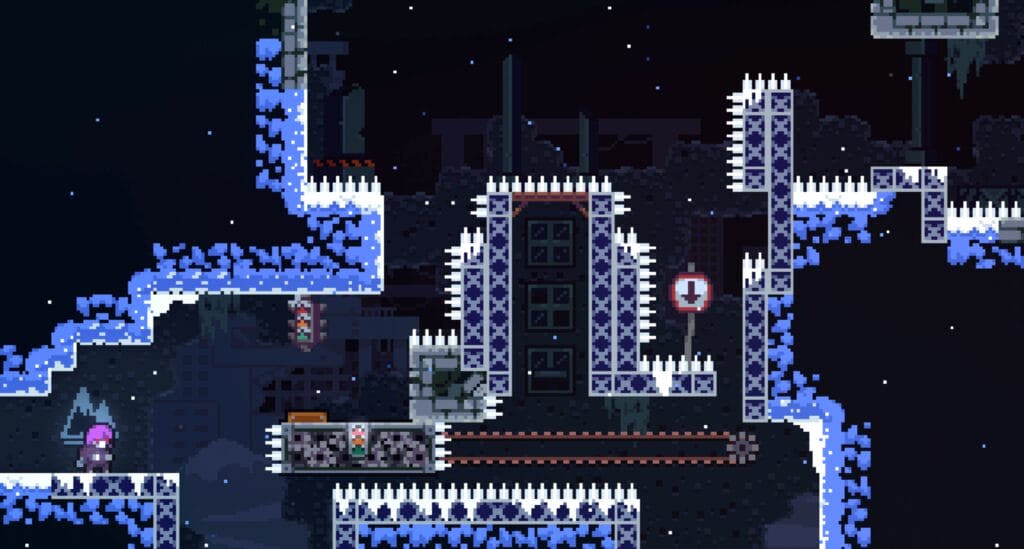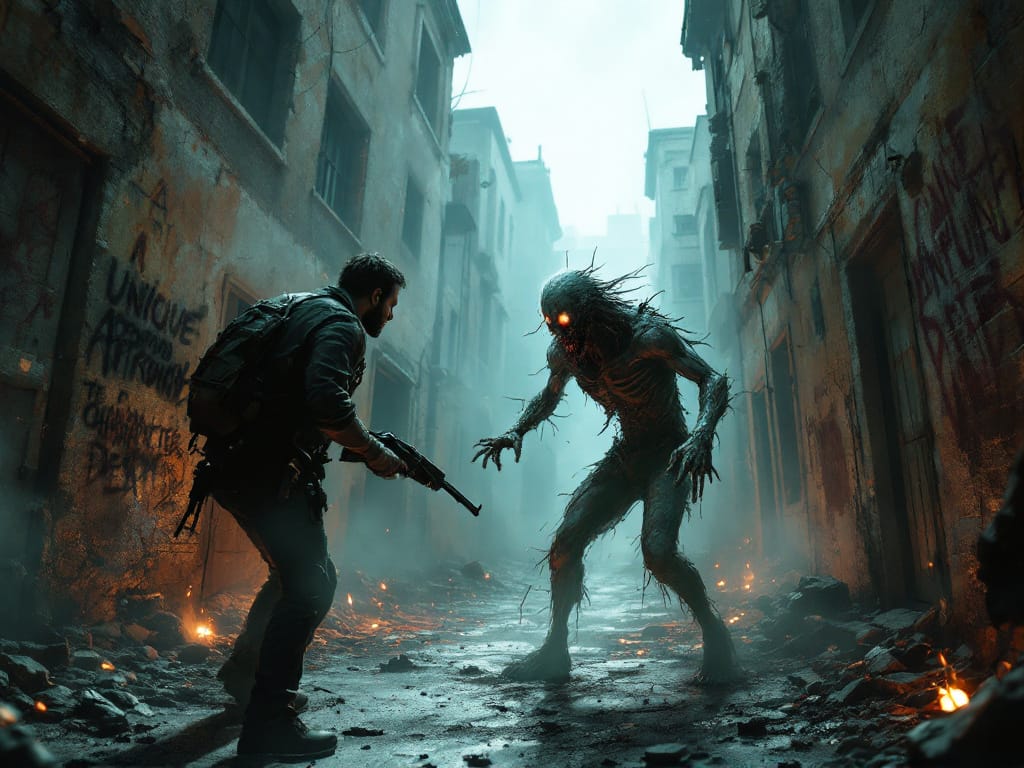Balancing a game’s difficulty is a crucial yet challenging aspect of game design. If done poorly, it can make or break the entire gameplay experience. An unbalanced game that is too difficult will frustrate players, while one that is too easy will bore them. The goal is to find the sweet spot where the game is challenging enough to be engaging but not so hard that it stops being fun.
This article will explore four useful techniques to improve game balance during the design process. Proper balancing requires extensive playtesting and iteration, but these tricks can help developers start off on the right foot:
- Know Your Audience
- Underestimate the Player’s Learning Curve
- Don’t Reward Skilled Players by Making the Game Easier
- Allow Players to Change the Game’s Difficulty
For each technique, we will examine the rationale behind it, look at real-world examples, and extract key takeaways that developers can apply in their own projects. By being cognizant of these methods, designers can craft more enjoyable and addictive game experiences right from the start.

Four tricks to improve game balance in your game design
What is Game Balance?
Game balance refers to adjusting and tuning a game’s mechanics to create an optimal level of challenge. The goal is to make the game difficult enough to be engaging but not so punishing that it stops being enjoyable.
Well-balanced games hit the “sweet spot” where players feel challenged but not overwhelmed. Every mechanic, level, encounter, and reward is fine-tuned to hit this “flow” state.
Is the balancing of game the same for different design topics and game genres ( example board game vs plataformer)
The specifics of balancing vary considerably between game genres and topics:
- Tabletop games: Chance-based games like Monopoly are balanced by playtesting many sessions and adjusting costs/rents. Strategy games like chess balance skillsets between different pieces.
- Platformers: Jumping gaps and enemies are positioned to match the player’s movement abilities. Power-ups are given at key moments to enable progression or shortcuts.
- RPGs: Attributes, skills, loot drops, and enemies are balanced to maintain steady progression in power. Bosses and story checkpoints are placed at appropriate challenge spikes.
- Multiplayer competitive: Maps, characters, items, and mechanics aim to provide balanced counterplay. No single dominant strategy should exist. Players can adapt with different tactical approaches.
In short, balance in each genre boils down to tuning the game elements specific to that genre. But the overarching goal remains making sure the game is neither too hard nor too easy at any given moment.
Why Balance Your Game?
Proper balancing is crucial because an unbalanced game harms overall engagement and retention:
- Too difficult: Players become frustrated, forced to grind, or hit impassable walls. This makes the game unfun.
- Too easy: Players become bored when they sleepwalk through all challenges. This makes the game tedious.
- Poor pacing: Spectacular highs and lows in challenge disrupt flow. Spikes overwhelm while lulls bore players.
Only when a game hits that sweet spot of steady, engaging challenge does it truly absorb players into a state of flow. That’s why balance should be a top priority for designers.
The Balancing Process
Balancing a great game requires an iterative loop of:
Playtesting
Get real players to test the game across skill levels. Gather feedback on what feels too hard or easy. Identify imbalance pain points.
Analysis
Dig into feedback to understand where and why the game goes out of balance. Figure out the root issues.
Tuning
Based on analysis, tweak mechanics, stats, level design, etc to target specific issues. Take an incremental and measured approach.
Repeat
After tuning, conduct playtests on the updated build to confirm it improved balance and didn’t create new issues. Repeat the process.
This loop continues throughout development as the game evolves. Balance is never “finished” – new content and mechanics can introduce imbalances. Playtesting feedback fuels ongoing balance polish.
💡 Key takeaway: “balance is both specific to each game’s mechanics yet universally vital for crafting rewarding gameplay. It requires an analytical mindset and player feedback to perfect.”
Know Your Audience
The first step in balancing a game is understanding who your players are. Different demographics naturally have different skill levels, learning curves, and gameplay preferences. Making assumptions here will undermine the entire process.
Key Factors to Consider
When assessing your audience, two key questions need to be asked:
- Who do you expect to play your game? This includes age, gaming experience, genre preferences, and other attributes. A multiplayer shooter will attract a very different crowd compared to a match-3 puzzle game.
- What similar games have they played before? This determines their baseline skill level. Players who regularly play fast-paced action games will have much higher initial abilities than casual mobile gamers.
Real World Example: Dark Souls vs Animal Crossing
Let’s compare two popular franchises that target completely different audiences:
- Dark Souls: This hardcore action RPG series is infamous for its brutal difficulty and niche appeal to seasoned gamers. The developers at FromSoftware know their audience has mastered many tough games before and wants an intense challenge. As a result, the Souls games have punishing combat, opaque systems, and unforgiving penalties for failure.
- Animal Crossing: This laidback life simulator series is designed for casual gamers of all ages. Nintendo knows its players want a stress-free experience focused on relaxation and creativity. As a result, there are no fail states in Animal Crossing. Players can take the game at their own pace with no pressure.
Both games are incredibly well balanced because the developers understood their target players and tailored the difficulty accordingly. Dark Souls would be horribly punishing for young or casual gamers, while Animal Crossing would be repetitive and boring for hardcore gamers.

💡 Key takeaway:”Research your target players thoroughly including their skills, experience with similar games, and demographics to establish an appropriate baseline difficulty rather than making assumptions, as different audiences require drastically different tuning which must be validated through extensive playtesting.”
Underestimate the Player’s Learning Curve
As players progress through a game, they naturally get better at it. Their skills improve, they master mechanics, and they learn strategies. The difficulty curve needs to increase proportionally to maintain engagement. However, overestimating how quickly players improve is a very common balancing pitfall.
The Risks of Overestimating
If developers overestimate the rate at which players learn and ramp up difficulty too quickly:
- Players who do improve steadily will find the game becomes too hard over time.
- Players who learn slowly will quickly fall behind the difficulty curve and find the game impossible.
- Frustrated players may resort to walkthroughs or stop playing the game entirely.
However, underestimating learning curves is far less risky:
- Players who learn quickly will still be engaged and feel a sense of mastery.
- Players who learn slowly will remain able to progress as the difficulty increases.
- The game gets easier over time, but players rarely quit games that seem too easy.
It’s always better for a game to wind up a bit too easy than far too hard. Difficulty can be increased in future playthroughs or via optional hardcore modes. However, players who hit a brick wall and cannot progress can wind up quitting permanently.

Real World Example: Super Meat Boy vs. Ghost of Tsushima
- Super Meat Boy: This ultra-challenging 2D platformer has very precise controls and demanding level design. The developers understood seasoned platformer fans would master the mechanics very quickly, allowing them to maintain an intense difficulty curve throughout.
- Ghost of Tsushima: This open-world samurai game has easier combat and progression to appeal to casual players. The developers knew many fans of cinematic action games would be unfamiliar with parrying and directional swordfighting. As a result, the difficulty ramps up gradually to avoid frustrating inexperienced players.
💡 Key takeaway:“Assume players will learn skills slowly, keep difficulty gradual at first with gradual ramp up based on observations, ensure early progression suits casual players, and use optional modes to provide steeper challenges without altering main progression.”
Don’t Reward Skilled Players by Making the Game Easier
Many games attempt to reward players for overcoming challenges by giving upgrades, new abilities, better gear, etc. However, this can inadvertently sabotage game balance.
The Problem
Giving upgrades to high performing players makes the game even easier for them, while players who struggled don’t get upgrades and fall even further behind the difficulty curve.
Instead of rewarding skill, this widens the balance gap. Top players need to feel challenged, not like gods. Low performing players need to be brought back into a playable balance zone.
Solutions
Here are some ways to reward skill without disrupting balance:
- Give upgrades to all players, but increase difficulty proportionally. High performers feel rewarded but game stays difficult.
- Give upgrades only to weaker players to help them get back into the balance zone. Strong players have the satisfaction of overcoming unmodified challenges.
- Hide upgrade difficulty increases. Display upgrades as rewards while stealthily increasing challenge behind the scenes.
- Offer special endings, modes, or content for top performers balanced separately from main game progression.
The goal should be to keep players within their preferred balance zone, not give better players an even easier experience.

Real World Example: God of War (2018) vs. Diablo 2
- God of War: This action game gets progressively harder as you earn new abilities. Enemies grow tougher to match Kratos’ increasing power, keeping challenge consistent throughout.
- Diablo 2: This ARPG lets high-level hardcore players become extremely overpowered through gear and skills. They destroy enemies with little effort, so the endgame is mindlessly easy unless playing in Hardcore mode.
💡 Key takeaway:“Avoid rewarding skill with easier gameplay which leaves weak players behind and bores advanced ones; instead, give careful upgrades to weaker players, counterbalance upgrades to strong players with proportional difficulty increases, and utilize extra challenges to test high-level abilities without reducing main game difficulty.”
Allow Players to Change the Game’s Difficulty
No matter how expertly designed, no single static difficulty curve will be ideal for all players. Giving players control over the challenge level caters to individual preferences.
Benefits
Adjustable difficulty has several advantages:
- Casual players can lower the difficulty if the game becomes too punishing.
- Experienced players seeking a hardcore challenge can ratchet it up higher.
- Players can dynamically change difficulty as their skills improve over the course of the game.
Being able to alter the challenge keeps players engaged across a wider range of skill levels.
Implementation Tips
Here are some best practices for adjustable difficulty:
- Make it easy for players to tweak difficulty settings at any time. Don’t penalize them for changing it.
- Support a wide range of granular settings instead of just Easy/Hard presets.
- Scale various aspects like damage taken/dealt, enemy density, timers, etc rather than just buffing health.
- Ensure lowered difficulty still retains some challenge and engagement. Don’t let the game become totally trivial.
- Optionally reward players who choose higher difficulties instead of punishing those who lower it.
Giving players more agency over their experience almost always improves game balance and accessibility.

Game Balancing Examples: Celeste vs. Cuphead
- Celeste: This tough 2D platformer lets players adjust game speed, stamina, and assist options to suit their skills. Difficulty can be changed instantly without penalty.
- Cuphead: This brutally hard run & gun shooter is completely inflexible with no difficulty settings. Players either persist or quit from the extreme challenges.
💡 Key takeaway:“Give players granular control over various aspects of difficulty like damage and timers anytime without penalty to support all skill levels, use a wide range of customized settings beyond presets, keep lowered difficulty engaging not trivial, and reward higher difficulties instead of punishing lower ones.”
Conclusion: four tricks to improve game balance in your game design
Balancing a great game takes extensive iterative playtesting and tuning. However, being mindful of these four key methods from the very start of development can give designers a robust balancing foundation to build upon:
- Know your audience – Cater to their specific skills, experience and preferences right from the start.
- Underestimate learning – Keep early challenge gradual; increase pace based on observed player improvement.
- Reward skill carefully – Avoid making the game even easier for proficient players.
- Enable difficulty adjustments – Give players control over their preferred challenge level.
Combined with later balancing polish from real player feedback, these techniques will help craft far more satisfying, addictive and accessible game experiences. Skilled balancing is crucial, but following this advice will give designers a considerable head start.
If you want to know more about game balancing check out our blog.
Key Resources
- Bates, Bob. Game Design: Volume 2 – Advanced Game Design
- Rogers, Scott. Level Up! The Guide to Great Game Design
Overall Key Takeaways
Key Takeaways for the game balancing
- Know who your expected players are and what skill levels they are likely to have. This establishes a baseline difficulty.
- Thoroughly research similar games your audience has played. Their experience with those games will inform their ability in yours.
- Drastically different target demographics require drastically different difficulty tuning. Design the game around your players.
- Never make assumptions about who might play your game. Extensive playtesting with actual users is required.
- Assume players will master skills and mechanics slower than expected. It’s better to be proven wrong than the other way around.
- Keep the difficulty curve gradual at first. Observe playtesters carefully to determine when ramp up.
- If the game will have both casual and hardcore fans, make sure early progression suits casual players.
- Optional modes can provide steeper challenge for skilled players without altering main progression.
- Avoid rewarding skill with easier gameplay. This leaves weak players behind and bores advanced players.
- Give careful upgrades to weaker players to help them improve. Strong players will enjoy the added challenge.
- If you must give better players upgrades, counterbalance with proportional difficulty increases.
- Advanced extra challenges can allow high-level players to test their abilities without reducing main game difficulty.
- Give players granular control over difficulty at any time without penalty. This supports players across skill levels.
- Allow adjusting different aspects like damage, timer leniency, enemy patterns. Don’t just buff health.
- Support a wide range of difficulty settings, not just simple presets. Players will appreciate the customization.
- Keep lowered difficulties engaging, not completely trivial. Players want some challenge preserved.
- Optionally reward higher difficulties instead of punishing lower ones so it feels like a fair challenge instead of failure.

Frequently Asked Questions ( FAQ) four tricks to improve game balance in your game design
Q: What are Balance Games problems?
A: Balance games problems refer to issues in game design where the game mechanics or elements are not well-balanced, resulting in an unfair or unenjoyable experience for players.
Q: How can I improve game balance in my game design?
A: There are several tricks you can use to improve game balance in your game design:
Q: What is game balance?
A: Game balance refers to the overall fairness and equality of a game, where each player has a relatively equal chance of winning. It is an important aspect of game development.
Q: What tools can game designers use to balance the game?
A: Game designers can use various tools and techniques to balance their games. Some common tools include spreadsheets, playtesting, and adjusting game mechanics.
Q: How does game theory help in balancing a game?
A: Game theory can help game designers analyze and understand the balance of a game. By applying game theory principles, designers can identify and address potential balance issues.
Q: What is the importance of symmetric game design in balancing a game?
A: Symmetric game design ensures that each player has access to the same resources and starting position, creating a fair and balanced playing field.
Q: Can you explain the concept of intransitive game balance?
A: Intransitive game balance refers to a game where each player has a chance of winning against another player, but there is no single dominant strategy. This adds complexity and unpredictability to the game.
Q: Is balance only important in multiplayer games?
A: Balance is important in all types of games, whether multiplayer or single-player. In single-player games, balance ensures that the game is challenging but not overly difficult, providing a satisfying experience for the player.
Q: How does the balance of a real-time strategy game differ from other game genres?
A: Real-time strategy games have unique balance considerations due to the real-time nature of gameplay. Balancing unit costs, abilities, and timing become crucial for ensuring a fair and enjoyable experience.
Q: How do difficulty levels affect game balance?
A: Difficulty levels in a game can help balance the game for different skill levels of players. By adjusting the AI or mechanics based on the chosen difficulty, the game can provide an appropriate challenge for each player.






















